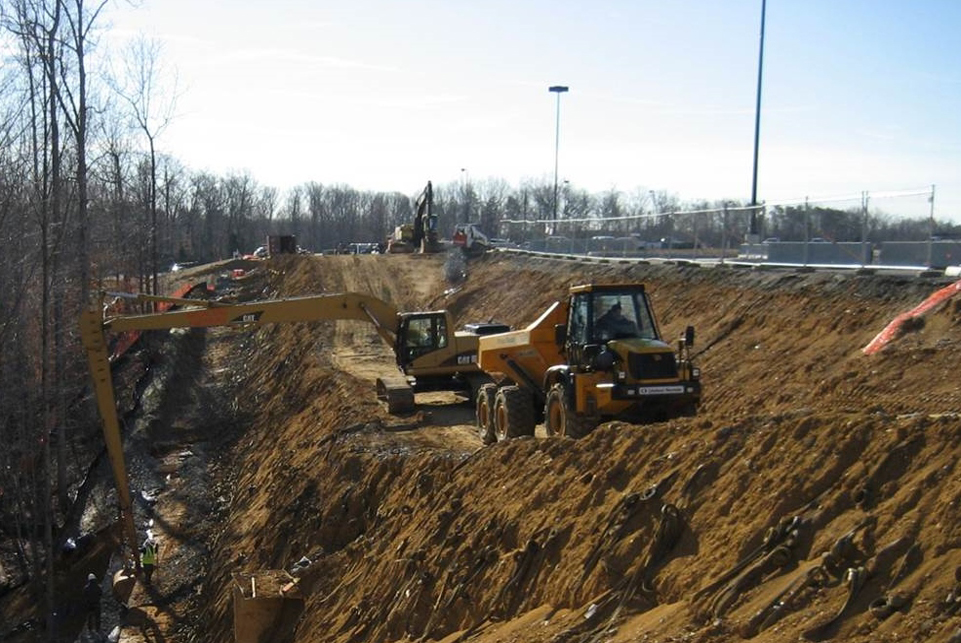How Geo Tech Engineering Supports Large-Scale Construction Projects
How Geo Tech Engineering Supports Large-Scale Construction Projects
Blog Article
The Crucial Payments of Geotechnical Designers in Evaluating Dirt Actions and Foundation Style for Sustainable Facilities Growth
Geotechnical designers offer as a keystone in the world of lasting framework growth, where their competence in assessing soil actions straight influences the safety and longevity of frameworks. By utilizing sophisticated techniques such as Standard Infiltration Examinations and Cone Infiltration Screening, they diligently examine soil buildings, leading to notified choices on structure layout.
Function of Geotechnical Engineers

In enhancement to website examinations, geotechnical designers examine possible threats such as dirt liquefaction, incline security, and groundwater concerns. They use innovative design concepts to create solutions that mitigate these dangers, making certain that styles follow pertinent codes and standards. Their work commonly includes partnership with other design self-controls, engineers, and environmental scientists to create integrated methods to facilities advancement.
Furthermore, geotechnical engineers add to sustainable methods by advertising making use of products and methods that lessen ecological impact. With their comprehensive understanding of soil technicians and geology, they play a vital function in cultivating safe, durable, and lasting infrastructure that satisfies the needs of culture while safeguarding the environment.
Dirt Behavior Evaluation Techniques
Comprehending soil habits is basic to informed decision-making in geotechnical engineering, as it straight affects the design and construction procedures. Numerous assessment strategies are employed to examine soil residential properties, guaranteeing exact predictions of its performance under different loading problems.
One key method is the Common Infiltration Test (SPT), which offers understandings right into soil density and uniformity through the resistance run into throughout penetration. Cone Penetration Screening (CPT) supplies a continual account of soil stratification and in-situ strength parameters, enabling an extra thorough understanding of subsurface problems.
Lab tests, such as Atterberg limits, unconfined compressive toughness, and triaxial examinations, are necessary for defining soil habits under controlled problems. These examinations assist in the determination of crucial parameters, consisting of shear leaks in the structure, compressibility, and stamina.

Foundation Design Principles
Foundation style concepts are important for ensuring the stability and durability of frameworks, as they determine how loads are transmitted from the superstructure to the underlying soil. These concepts incorporate various factors to consider, consisting of load-bearing capacity, settlement, and lateral stability. A thorough understanding of soil mechanics is important for geotechnical designers to review the interaction between the soil and the foundation.
One secret principle is the suitable option of structure type, which may consist of superficial foundations, such as spread grounds, or deep foundations, like caissons or piles, depending upon dirt problems and structural loads - geotechnical industry. The foundation must be created to lessen differential settlement, which can bring about structural damages

Lasting Infrastructure Practices
Just how can we efficiently incorporate sustainability into framework methods? Lasting framework methods begin with extensive site evaluations, which examine soil habits, neighborhood geotechnical eng communities, and resource accessibility.
Furthermore, using ingenious construction strategies, such as using recycled products and low-impact foundations, dramatically decreases the carbon impact of facilities tasks. Geotechnical engineers play a crucial role in choosing appropriate materials that boost toughness and sustainability, such as using geo-synthetics to enhance soil security and reduce erosion.
In enhancement, lasting framework practices require ongoing monitoring and maintenance to ensure that structures continue to be resilient over time. Ultimately, these practices not just add to the long life of frameworks yet likewise advertise a much healthier setting, straightening framework advancement with wider sustainability objectives.
Study and Applications
Study in geotechnical design give beneficial understandings right into the useful applications of soil behavior and lasting framework methods. One noteworthy example is the construction of the Burj Khalifa in Dubai, where considerable soil screening and analysis were performed to review the distinct difficulties presented by the region's loosened sand and high water table. Geotechnical engineers utilized advanced techniques such as dynamic penetrating and cone infiltration testing to figure out the soil's load-bearing capacity, inevitably causing the style of a deep structure system that sustains this iconic framework.
Another critical instance is the remediation of the San Francisco-Oakland Bay Bridge after the 1989 Loma Prieta quake. Geotechnical evaluations disclosed the requirement for dirt stabilization strategies, including grouting and dirt nailing, to improve the seismic strength of the foundation. These treatments not only boosted the bridge's security yet likewise added to its durability and sustainability.
Such case research studies exemplify exactly how geotechnical engineers play a vital function in comprehending soil actions and applying ingenious options to make sure the architectural stability and sustainability of infrastructure jobs. geotechnical eng. Their competence is important in addressing the facility tests postured by different dirt conditions across diverse geographical areas
Conclusion
To conclude, the payments of geotechnical designers are vital for the evaluation of dirt actions and the layout of foundations, which are vital for lasting infrastructure development. With the application of sophisticated screening strategies and cutting-edge materials, these experts make sure the security and safety of structures while reducing environmental effects. The assimilation of sustainable practices promotes durability in framework tasks, highlighting the relevance of collaboration among stakeholders to accomplish reliable building options that satisfy both environmental and societal needs.
Geotechnical engineers serve as a keystone in the world of lasting facilities advancement, where their proficiency in evaluating soil behavior directly influences the safety and longevity of frameworks.Geotechnical designers play a crucial role in the layout and building and construction of facilities by examining soil and rock behavior to ensure stability and safety and security. A thorough understanding of soil mechanics is essential for geotechnical designers to examine the interaction between the soil and the foundation.
Geotechnical assessments revealed the demand for dirt stabilization techniques, including grouting and dirt nailing, to improve the seismic durability of the structure.In final thought, the contributions of geotechnical designers are important for the evaluation of dirt actions and the design of structures, which are vital for sustainable framework growth.
Report this page